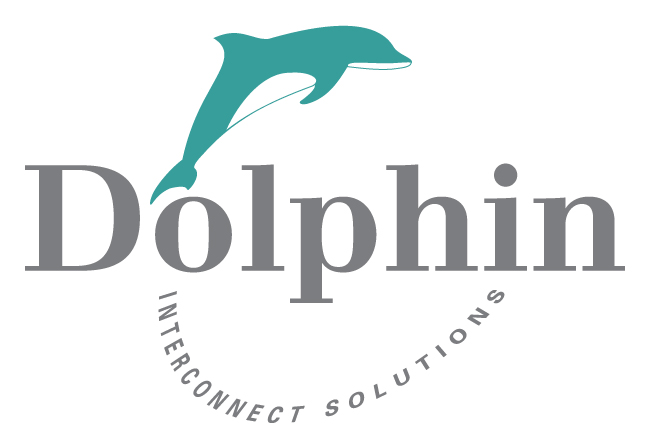For users of :SISCI, SuperSockets, IPoPCIe
Windows version
Dolphin Interconnect Solutions
This document describes the installation and usage of Dolphins PCI Express software stack (eXpressWare) version 5.19.x in combination with Dolphin MX interconnect hardware.
Copyright © 2022 Dolphin Interconnect Solutions
March 8th, 2022
Table of Contents
- Abstract
- 1. Introduction & Overview
- 1. Who needs a PCI Express Network?
- 2. eXpressWare
- 3. Dolphin PCI Express PX Adapter cards
- 4. Dolphin PCI Express MX Adapter cards
- 5. Dolphin PCI Express IX Adapter cards
- 6. Dolphin PCI Express Switches
- 7. PCI Express Cables
- 8. Supported OEM hardware
- 9. PCI Express networking basics
- 10. What's Special about PCI Express and SuperSockets?
- 11. Contents of this Document
- 12. Terminology
- 13. Support
- 2. Quick Installation Guide
- 3. Requirements and Planning
- 4. Initial Installation
- 1. Installation Overview
- 2. Software Installation
- 2.1. Running the Dolphin Installer
- 2.2. Commandline installation
- 2.3. Post installation
- 2.4. Working with the Dolphin Network Configurator, dis_netconfig
- 2.5. Cluster Cabling
- 2.6. Handling Installation Problems
- 2.7. Interconnect Validation using the management GUI
- 2.8. Interconnect Validation using the command line
- 2.9. Making Cluster Application use PCI Express
- 5. Interconnect Maintenance
- 6. Configuring the adapter card
- 7. Firmware upgrade
- 8. SISCI API
- 1. SISCI Documentation and resources
- 2. Enable applications to use the SISCI API
- 3. How to compile your own SISCI application
- 4. SISCI API Demo and Example programs
- 4.1. SISCI API Example programs
- 4.1.1. shmem
- 4.1.2. memcopy
- 4.1.3. interrupt
- 4.1.4. data_interrupt
- 4.1.5. intcb
- 4.1.6. lsegcb
- 4.1.7. rsegcb
- 4.1.8. dma
- 4.1.9. dmacb
- 4.1.10. dmavec
- 4.1.11. rpcia
- 4.1.12. smartio_example
- 4.1.13. reflective_memory
- 4.1.14. reflective_device
- 4.1.15. reflective_device_receive
- 4.1.16. reflective_write
- 4.1.17. probe
- 4.1.18. query
- 4.2. SISCI API demo and benchmarks programs
- 9. Dolphin PCI Express TCP/IP Driver
- 10. SuperSockets
- 11. SmartIO
- 12. Transparent Board Management
- 13. Advanced Topics
- 14. FAQ
- A.
dis_adminReference - B. Configuration Files
- C. Platform Issues and Software Limitations
- D. Example Scripts
- E. eXpressWare License text
List of Figures
- 2.1. Windows Installer: Setup Type
- 2.2. Windows Installer: Custom Setup
- 2.3. Windows Installer: NDIS feature
- 4.1. Windows Installer: Icon
- 4.2. Windows Installer: Welcome Message
- 4.3. Windows Installer: Setup Type
- 4.4. Windows Installer: Custom Setup
- 4.5. Windows Installer: Installing Software
- 4.6. Windows Installer: Cancel Wizard on Windows XP and Windows Server 2003
- 4.7. Windows Installer: Continue Anyway on Windows XP and Windows Server 2003
- 4.8. Windows Installer: Configure Firewall
- 4.9. Windows Installer: Completed
- 4.10. Windows Installer: Device Manager
- 4.11. msiexec help menu
- 4.12. Cluster Edit dialog of dis_netconfig
- 4.13. Main dialog of dis_netconfig
- 4.14. Node dialog of dis_netconfig
- 4.15. Starting dis_admin
- 4.16. Dolphin dis_admin GUI - Connect to Network Manager
- 4.17. Dolphin dis_admin GUI - Representation of topology
- A.1. Fabric has FAILED due to dead Cluster Nodes
- A.2. Options in the Admin menu
- A.3. Options in the Cluster menu
- A.4. Options in the Node menu
- A.5. Cluster configuration in dis_admin
- A.6. Advanced settings for a Cluster Node
- A.7. Result of running cable test on a good cluster
- A.8. Result of cable test on a problematic cluster
- A.9. Result of fabric test without installing all the necessary rpms
- A.10. Result of fabric test on a proper fabric
List of Tables
- A.1. Node or Adapter State
- A.2. Link State
